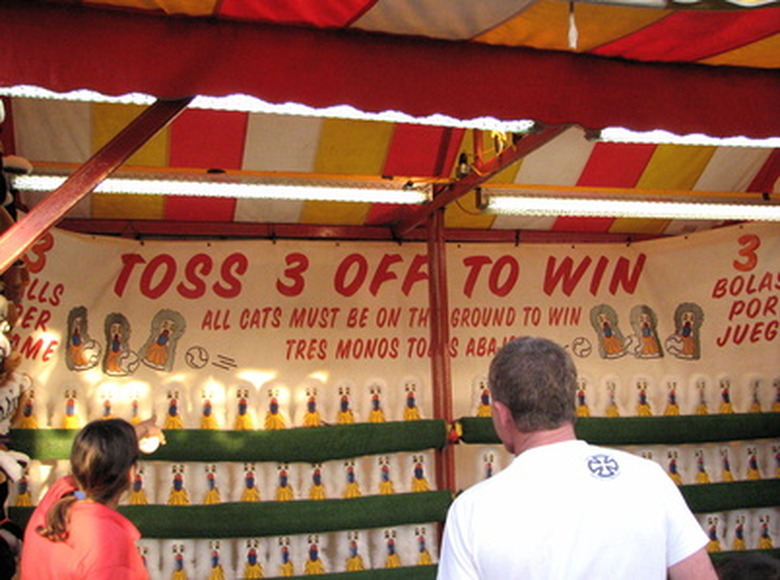Math Carnival Games
Carnivals are appealing to kids of all ages. Setting up a math carnival at home or in the classroom gives kids a chance to practice their math skills while having fun. Many classic carnival games lend themselves well to math concepts. You can modify the games to use numbers and math concepts that correspond to the current math curriculum for students.
Ring Toss
Ring Toss
Throwing rings onto bottles is a classic carnival game. You can easily add a math aspect to it by painting or taping numbers onto the bottles. Place the bottles close together and let the kids throw rings at them. There are many possibilities for using the numbers for math activities. You can have the kids either add, subtract or multiply the two numbers they ring to see who ends up with the highest answer. Another option is to create a criteria for winning. For example, you might say the total must equal more than 25.
Ball Toss
Ball Toss
A series of buckets or laundry baskets can serve as targets for this game. The buckets are placed at different distances from the throwing line. The farther from the throwing line, the more points the target is worth. Each child gets three balls. He tosses balls at the targets, keeping track of the corresponding point value. After throwing all three balls, the child adds up the total for his final score. You can also have the kids multiply their numbers.
Estimating Jar
Estimating Jar
Estimation is an important math skill for students to practice. For this carnival game, you need jars filled with small objects. Ideas for fillers include candy, small blocks, paper clips or beads. The smaller the item, the more difficult the estimation will be. The students inspect the jar and guess the number of items in the jar. A box near each jar allows the kids to place their guesses inside. At the conclusion of the carnival, count the items as a group to determine who was closest.
Place Value Rings
Place Value Rings
This game uses rings of progressive sizes. Tape on the floor or a string works to create the rings. You can also cut a large cardboard circle and paint each ring. You'll need nine rings. Number the rings from 1 to 9, with the middle section worth 9 and the outer ring worth 1. Each player gets a set number of bean bags. The number of bean bags corresponds to the place value you're studying. For example, if you're working on numbers to the thousands place, each child will throw four bean bags. The bean bags are tossed onto the target. The numbers where the bean bags land are used to create the number. The person who creates the highest number using the individual digits is the winner.
References
Cite This Article
MLA
Frost, Shelley. "Math Carnival Games" sciencing.com, https://www.sciencing.com/math-carnival-games-5990657/. 24 April 2017.
APA
Frost, Shelley. (2017, April 24). Math Carnival Games. sciencing.com. Retrieved from https://www.sciencing.com/math-carnival-games-5990657/
Chicago
Frost, Shelley. Math Carnival Games last modified August 30, 2022. https://www.sciencing.com/math-carnival-games-5990657/
